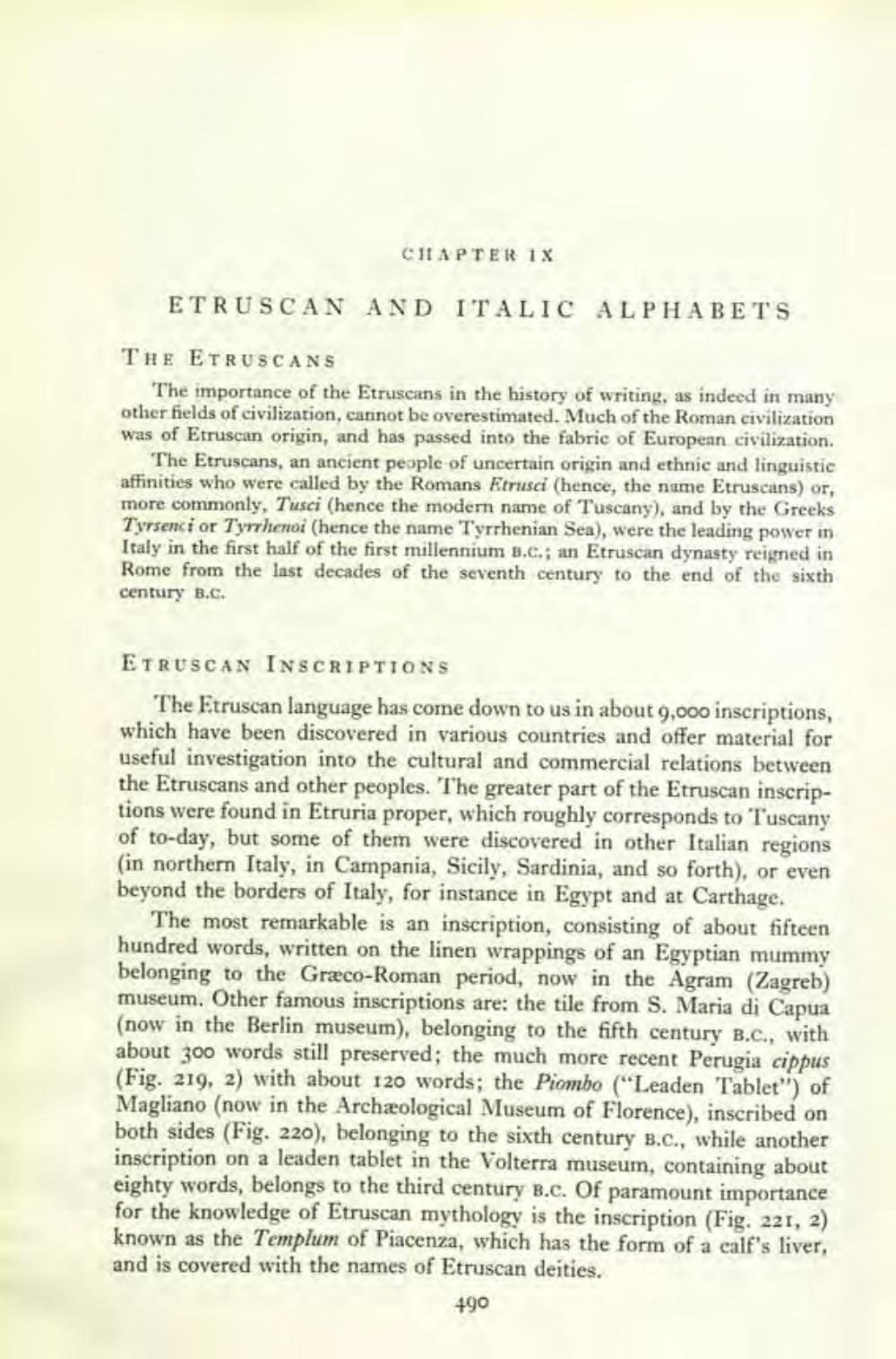________________
CHAPTER 1X
ETRUSCAN AND ITALIC ALPHABETS
THE ETRUSCANS
The importance of the Etruscans in the history of writing, as indeed in many other fields of civilization, cannot be overestimated. Much of the Roman civilization was of Etruscan origin, and has passed into the fabric of European civilization.
The Etruscans, an ancient people of uncertain origin and ethnic and linguistic affinities who were called by the Romans Etrusci (hence, the name Etruscans) or, more commonly, Tusci (hence the modern name of Tuscany), and by the Greeks Tyrsenci or Tyrrhenoi (hence the name Tyrrhenian Sea), were the leading power in Italy in the first half of the first millennium B.C.; an Etruscan dynasty reigned in Rome from the last decades of the seventh century to the end of the sixth century B.C.
ETRUSCAN INSCRIPTIONS
The Etruscan language has come down to us in about 9,000 inscriptions, which have been discovered in various countries and offer material for useful investigation into the cultural and commercial relations between the Etruscans and other peoples. The greater part of the Etruscan inscriptions were found in Etruria proper, which roughly corresponds to Tuscany of to-day, but some of them were discovered in other Italian regions (in northern Italy, in Campania, Sicily, Sardinia, and so forth), or even beyond the borders of Italy, for instance in Egypt and at Carthage.
The most remarkable is an inscription, consisting of about fifteen hundred words, written on the linen wrappings of an Egyptian mummy belonging to the Græco-Roman period, now in the Agram (Zagreb) museum. Other famous inscriptions are: the tile from S. Maria di Capua (now in the Berlin museum), belonging to the fifth century B.C., with about 300 words still preserved; the much more recent Perugia cippus (Fig. 219, 2) with about 120 words; the Piombo ("Leaden Tablet") of Magliano (now in the Archæological Museum of Florence), inscribed on both sides (Fig. 220), belonging to the sixth century B.C., while another inscription on a leaden tablet in the Volterra museum, containing about eighty words, belongs to the third century B.c. Of paramount importance for the knowledge of Etruscan mythology is the inscription (Fig. 221, 2) known as the Templum of Piacenza, which has the form of a calf's liver, and is covered with the names of Etruscan deities.
490




